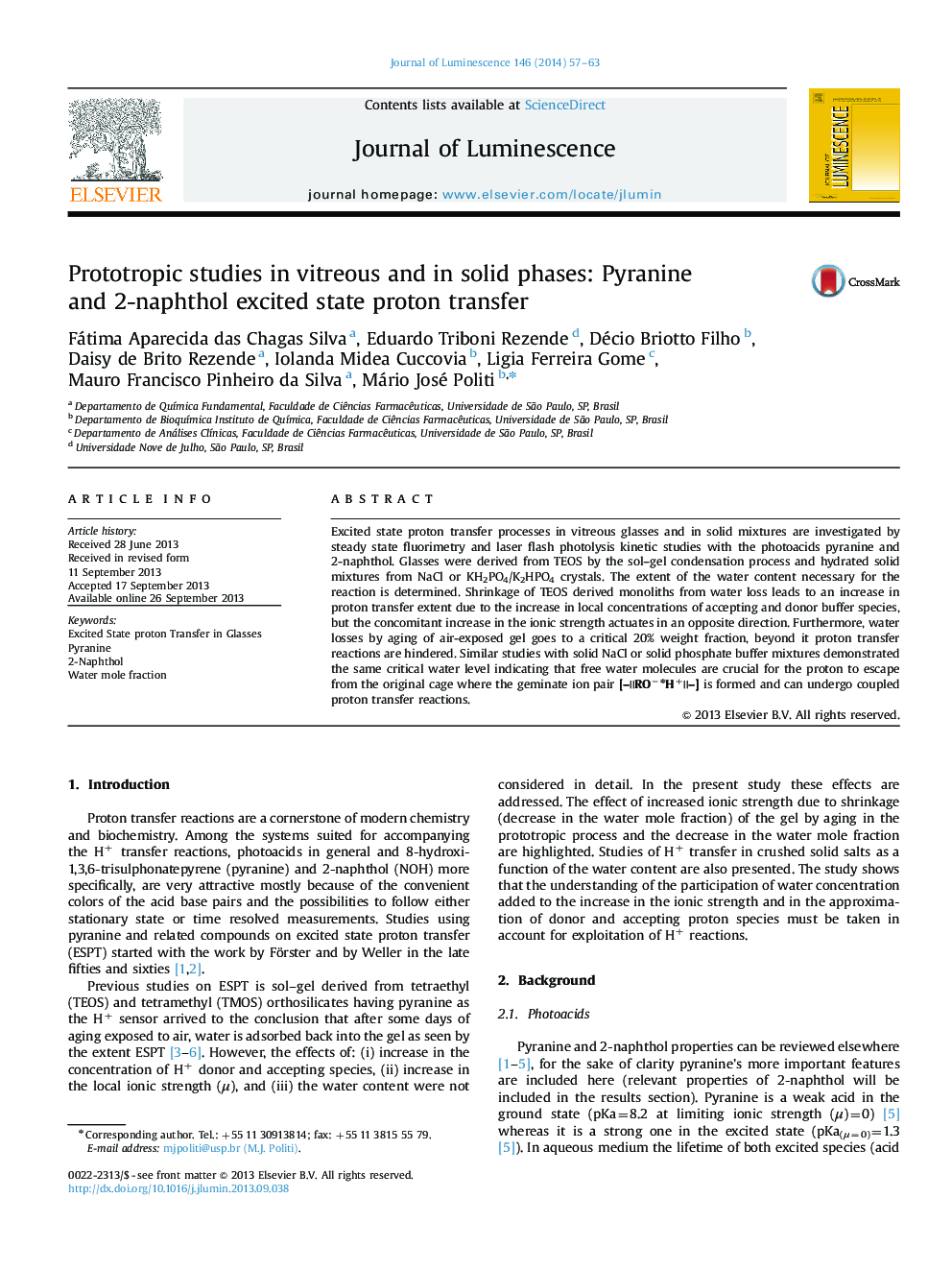| Article ID | Journal | Published Year | Pages | File Type |
|---|---|---|---|---|
| 5400305 | Journal of Luminescence | 2014 | 7 Pages |
Abstract
Excited state proton transfer processes in vitreous glasses and in solid mixtures are investigated by steady state fluorimetry and laser flash photolysis kinetic studies with the photoacids pyranine and 2-naphthol. Glasses were derived from TEOS by the sol-gel condensation process and hydrated solid mixtures from NaCl or KH2PO4/K2HPO4 crystals. The extent of the water content necessary for the reaction is determined. Shrinkage of TEOS derived monoliths from water loss leads to an increase in proton transfer extent due to the increase in local concentrations of accepting and donor buffer species, but the concomitant increase in the ionic strength actuates in an opposite direction. Furthermore, water losses by aging of air-exposed gel goes to a critical 20% weight fraction, beyond it proton transfer reactions are hindered. Similar studies with solid NaCl or solid phosphate buffer mixtures demonstrated the same critical water level indicating that free water molecules are crucial for the proton to escape from the original cage where the geminate ion pair [-||ROââH+||-] is formed and can undergo coupled proton transfer reactions.
Keywords
Related Topics
Physical Sciences and Engineering
Chemistry
Physical and Theoretical Chemistry
Authors
Fátima Aparecida das Chagas Silva, Eduardo Triboni Rezende, Décio Briotto Filho, Daisy de Brito Rezende, Iolanda Midea Cuccovia, Ligia Ferreira Gome, Mauro Francisco Pinheiro da Silva, Mário José Politi,
